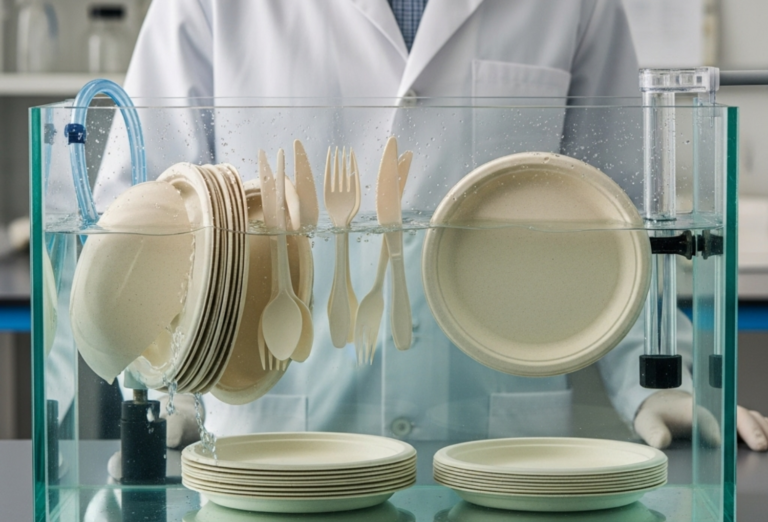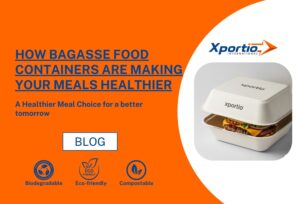As sustainability becomes a key priority for businesses across the globe, more importers, wholesalers, and supermarts in the USA are turning to eco-friendly disposable tableware—particularly those made from bagasse, the fibrous pulp left after extracting juice from sugarcane. While demand is rising, ensuring you’re investing in high-quality products is crucial for customer satisfaction, brand reputation, and environmental compliance.
In this guide, we’ll walk you through how to assess the quality of eco-friendly disposable tableware before placing your order.
Table of Contents
Why Quality Checks Matter in Eco-Friendly Tableware
For any eco-conscious food service business or distributor, the integrity of your disposable packaging must match your sustainability goals. Poor-quality disposables can lead to:
- Leakage and sogginess
- Complaints from end customers
- Waste of inventory
- Poor brand impression
That’s why quality evaluation isn’t optional—it’s a key step in sourcing.

Genuine bagasse tableware should be made from 100% sugarcane pulp without any plastic coating. Many products on the market falsely advertise themselves as compostable, when in reality, they’re coated with petroleum-based films.
What to look for:
- A natural, fibrous texture — not overly smooth or shiny
- Certifications such as BPI Compostable, OK Compost, or ASTM D6400/D6868
- A supplier’s raw material sourcing details
2. Inspect Strength and Durability
Eco-friendly doesn’t mean flimsy. In fact, quality sustainable mealtrays and plates should withstand reasonable pressure and usage conditions.
Quality indicators:
- Rigid structure — plates and bowls should not bend under weight
- Ability to hold liquid and greasy foods without disintegrating
- Resistance to tearing or folding
Test samples under real-use conditions. For example, try placing a full meal with gravy or curry and check for leakage or sagging.
3. Is Your Tableware Oil & Grease Resistant?
When food items like fried chicken, burgers, or stir-fry are served, oil seepage can ruin the eating experience and damage your customers’ trust. This is why oil and grease resistance is a crucial quality metric.
Test it yourself:
- Place oily or greasy food directly on the surface of the plate or biodegradable clamshell
- Wait 30–60 minutes
- Check the bottom for any visible stains or absorption
Good-quality eco-friendly disposable tableware made from bagasse is naturally oil-resistant, but the product’s thickness and finish can significantly affect performance.
4. Microwave Safe and Leakproof Disposable: Is It Really?
Many suppliers label their products as microwave safe and leakproof disposable, but you’ll want to confirm these claims.
Test process:
- Microwave the plate or container for 3–5 minutes with moist or oily food.
- Check if the material warps, softens, or leaks.
- Pour water or soup into containers like biodegradable clamshells and see how long they retain liquids without absorption or seepage.
5. Certifications and Standards to Look For
Quality eco-friendly tableware should meet recognized international standards. These not only prove compostability but also indicate product safety for food contact.
Key certifications include:
- BPI (Biodegradable Products Institute) – USA standard for compostables
- TÜV Austria / OK Compost – European certification
- SGS Testing – General safety, heavy metal content, and performance test.
Also check whether the products conform to ISO 17088, EN 13432, or ASTM D6868 standards.
6. Odor and Aftertaste: The Often-Ignored Test
High-quality eco-friendly disposable tableware should have no chemical odor and no aftertaste when used. If your meal picks up a taste from the plate or bowl, that’s a red flag—likely from chemical residue or improper drying.
Try this:
- Serve hot water in a bowl
- Let it sit for 10 minutes
- Taste the water — any bitterness or odd flavor signals poor manufacturing hygiene
7. Packaging and Shipping Quality
Even the best-made product is useless if it arrives damaged or moldy. Ensure the supplier offers:
- Moisture-resistant, export-quality packaging
- Shrink-wrapped inner sets to avoid contamination
- Proper labeling with product name, size, quantity, and batch details
Final Thoughts: Quality Is the Backbone of Sustainability
Choosing high-quality eco-friendly disposable tableware isn’t just about appearance—it’s about performance, safety, and credibility. Whether you’re supplying to restaurants, supermarts, or food delivery chains, cutting corners on quality can backfire.

